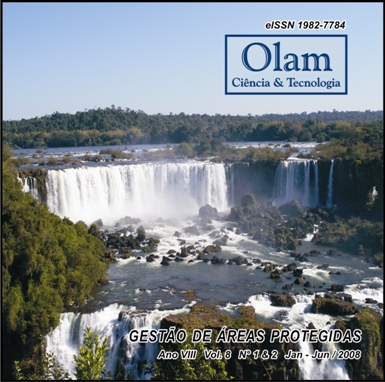GESTÃO DO PATRIMÔNIO CULTURAL E NATURAL
Palavras-chave:
Conservação. Gestão. Instituição de Preservação. Patrimônio Cultural. Patrimônio Natural. Salvaguarda.Resumo
Diante da ação do tempo, da natureza e do ser humano na deterioração, na descaracterização e mesmo na destruição da natureza e das manifestações materiais e imateriais do homem e da sociedade, há necessidade de salvaguardar-se esse patrimônio. Para a compreensão da gestão do patrimônio, algumas questões devem ser respondidas, como o que é patrimônio? Qual a sua importância? Como realizar sua salvaguarda? Quais são as instituições encarregadas de sua gestão e salvaguarda no Brasil? Sobre a definição de patrimônio foram consultadas a UNESCO e a Constituição da República Federativa do Brasil de 1988. Segundo estas, ele é constituído pelos patrimônios cultural (material e imaterial) e natural. A importância do patrimônio está abrigada em suas categorias históricas, sociais, administrativas, urbanas, arquitetônicas, econômicas e ambientais, imprescindíveis à ciência, à história, à arte e ao habitat. Para salvaguardar-se o patrimônio, foram abordados o tombamento, a conservação, a preservação, a manutenção, a adaptação, a restauração, a reabilitação e as recomendações internacionais. A gestão do patrimônio cultural e natural realiza-se por meio das instituições intergovernamentais, no âmbito internacional, e governamentais, nos âmbitos nacional, estadual e local. No processo de gestão, há a intervenção das instituições não-governamentais, públicas e privadas, organizações sociais relacionadas com a salvaguarda do patrimônio, além dos proprietários dos bens tombados. O patrimônio cultural e natural faz-se relevante para a preservação da história, da identidade e da memória tanto das gerações presentes como das futuras. Palavras-chave: Conservação. Gestão. Instituição de Preservação. Patrimônio Cultural. Patrimônio Natural. Salvaguarda. Abstract In the face of time action, nature and men in the deterioration, the decharacterisation and even in the destruction of nature and the material and immaterial manifestations of mankind and society; there is a necessity to preserve this patrimony. In order to understand the patrimony management, some questions must be answered: What is patrimony? What is the importance of patrimony? How to preserve patrimony? What are the institutions in charge of the management and preservation of patrimony in Brazil? About the definition of patrimony the UNESCO and the Brazil’s Constitution of 1988 were consulted. Patrimony is constituted by cultural patrimony (material and immaterial) and natural patrimony. The importance of patrimony is sheltered in its historical, social, administrative, urban, architectonic, economic and environmental categories; indispensable to science, history and the habitat. To preserve patrimony a register as historic site, conservation, preservation, maintenance, adaptation, restoration, rehabilitation and international recommendations were dealt with. The management of the natural and cultural patrimony will come true through intergovernmental institutions on international scope, governmental institutions on national scope, state and local institutions. On the management process intervene non-governmental institutions, public and private institutions, social organizations related to patrimony preservation, besides the owners of the sites registered as historic. The cultural and natural patrimony is relevant to the preservation of history, identity and memory of present and future generations. Key words: Conservation. Management. Preservation Institution. Cultural Patrimony. Natural Patrimony. Preservation. OLAM - Ciência & Tecnologia, Rio Claro, SP, Brasil – eISSN: 1982-7784 está licenciada sob Licença Creative Commons. Rio Claro / SP, Brasil Ano VIII Vol. 8 No.2, Janeiro - Junho / 2008 – RESUMOSDownloads
Publicado
2008-08-17
Edição
Seção
ARTIGOS

